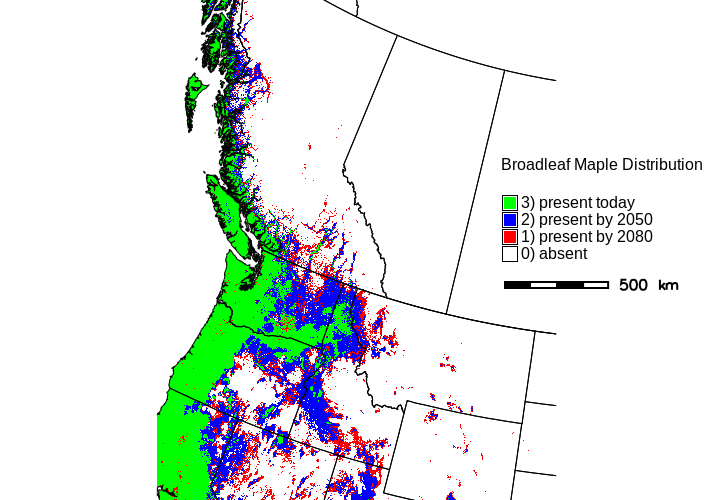The model using 11 of the most predictive variables had an accuracy of about 95% based on combined cross-validation metrics, with 98% AUC. The predictive variables reflected known habitat requirements, and the base distribution mapped by the model closely matched the distribution maps currently in use (Fryer, 2011).
Predicted future habitat suitability maps indicate that A. macrophyllum‘s range will increase significantly over the 21st century, with most of the dispersal occurring before 2070. We can expect A. macrophyllum to migrate upslope and inland, into interior forests in the western US and southern BC. Northward migration is less intense, and concentrated along fluvial valleys in BC. There is no habitat loss predicted under any climate scenario. The differences between predicted range for different climate scenarios were not significant by 2050, but the low emissions scenario predicted less dispersal by 2080 than the moderate and high emissions scenarios.
